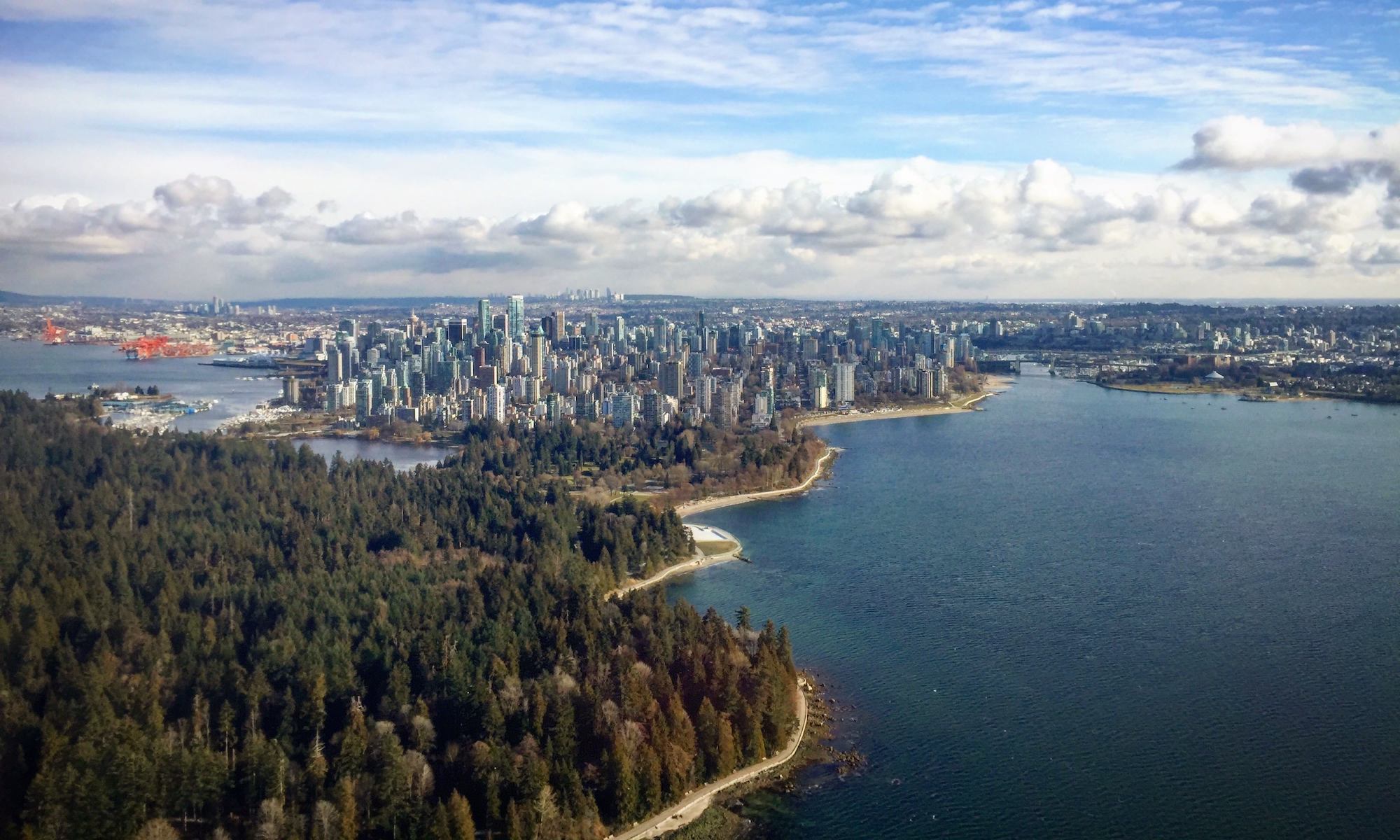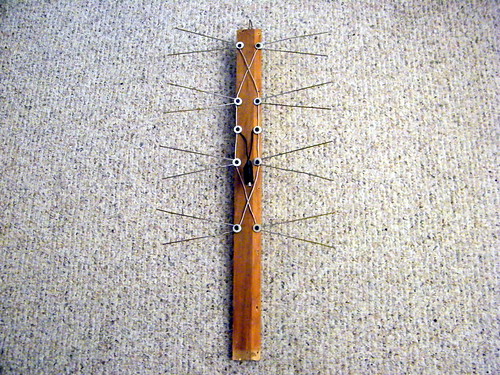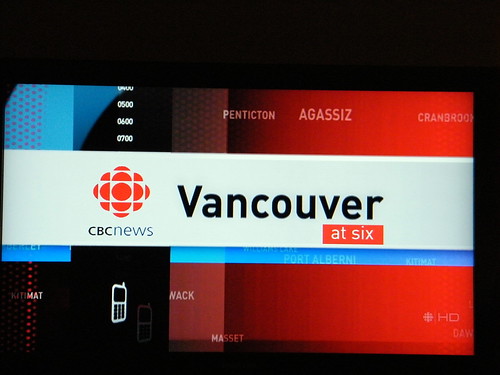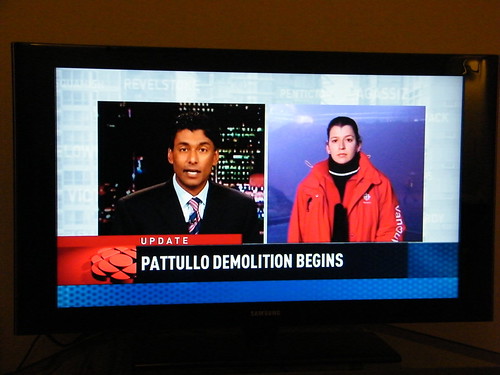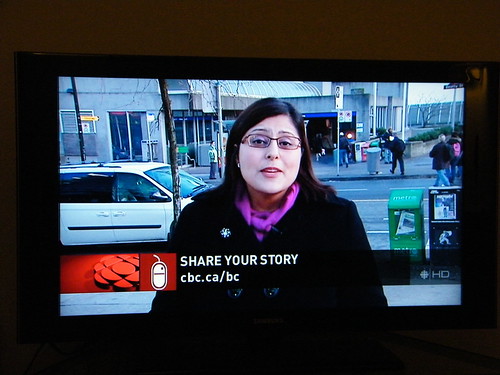For Christmas, Rebecca and I decided to upgrade our TV and move into the digital television age. Our previous TV was graciously given to us by our friends Gus and Russ shortly after I moved here when they upgraded as well. The present to ourselves wasn’t an easy one in terms of picking one out, but we were finally able to settle on a great 40″ Samsung that we found at London Drug.
Before I continue, let me just say that everyone should do their research when purchasing a TV like this. It’s not as much as finding out what is out there but what you can get in terms of where you can buy and the models they have in stock. When asking if this Samsung had a built-in digital turner for over the air reception of digital television signals (which is the main point of this post), no one had the answer. In fact, they even told me that the only way you could get HDTV, especially in the U.S. after February DTV switch(FAQ), was if you have cable, and if you didn’t have cable, then you wouldn’t be able to get HDTV at all.
I’m a broadcast technician in my day job. I worked along side TV engineers for Iowa Public Television and witnessed first hand as their transmitter site in West Branch, Iowa got massively overhauled for the DTV transition. Don’t let these sales people convince you of this false information, and I would bet that cable companies would prefer if everyone thought this. Over the air (OTA) digital television (DTV) is very possible, and more importantly, it’s free.
It wasn’t until I found the following video on YouTube until I started getting really excited about making our purchase. Everything in baby steps, and we weren’t going to do the upgrade all at once in terms of getting a HD box for our cable and bump up the monthly payments. However, if I could make my own antenna and get OTA DTV, then that is something to be excited about, even if there is only three digital stations in Vancouver so far.
This video sounded too good to be true, and poking around found a lot of people reporting success with it. While on our vacation in Iowa at the beginning on this month, I decided to take on a test with my parents’ television and built this contraption. Unfortunately it only worked well on the second floor of the house due to their location in a river valley. That’s not to say that it didn’t work at all. They just need to put an antenna up on the roof and everything will be peachy, but it worked like a charm otherwise.
I dismantled my prototype, threw the metal parts in our checked luggage, and put it back together when we got back to Vancouver. The result was this.
Living in the west end of Vancouver, we’re in a prime location to receive OTA DTV signals since Mt. Seymour is home to nearly everyone who broadcasts TV or FM signals. It’s worth noting, without getting overly technical about it, that UHF and VHF frequencies generally travel in a line of sight manner, and cement and wood can be problematic for reception.
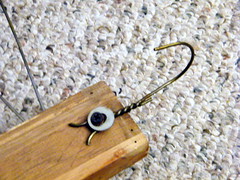 I took some of the extra pieces of the metal clothes hangers and fashioned a way to hang this in one of our windows. There has been some thick fog covering the city for about the past week, and it has caused some minor issues in terms of reception. Being that DTV is all or none, you shift the antenna a little and the picture pops back on in full glory. This little hook allows me to place it nearly where ever I want to.
I took some of the extra pieces of the metal clothes hangers and fashioned a way to hang this in one of our windows. There has been some thick fog covering the city for about the past week, and it has caused some minor issues in terms of reception. Being that DTV is all or none, you shift the antenna a little and the picture pops back on in full glory. This little hook allows me to place it nearly where ever I want to.
Just for some extra proof, I snapped some photos during the newscast last night on CBC.
Honestly, since I can see this in HD for free, it makes me want to watch the news. The pretty, pretty news…
Currently in Vancouver, there are only three networks transmitting DTV signals, and you might find some U.S. signals from Washington state depending on your location in the lower mainland.
- CBC – CH. 58.1
- Global – CH. 22.2
- CTV – CH. 33.1
- Omni – CH. 42.1
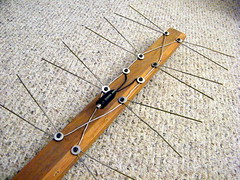 It’s not much in terms of selection. However, you might notice that OTA signals give a slightly better picture quality due to the lack of compression that you have occurring through your cable connection or digital satellite, so there is give and take. Not much selection, but three channels in eye popping quality, at least with their programming is in HD as well. Hopefully more stations come on line with DTV transmitters in the coming months, especially as Canada prepares for its own digital transition on August 31, 2011.
It’s not much in terms of selection. However, you might notice that OTA signals give a slightly better picture quality due to the lack of compression that you have occurring through your cable connection or digital satellite, so there is give and take. Not much selection, but three channels in eye popping quality, at least with their programming is in HD as well. Hopefully more stations come on line with DTV transmitters in the coming months, especially as Canada prepares for its own digital transition on August 31, 2011.
Update as of April 14, 2009: I found this great list of television stations in British Columbia on Wikipedia that has details on all terrestrial TV broadcasters as well as the digital channels they have been asigned. Took me a while to figure it out, but anything highlighted in red is currently “dark” until those stations do something with them.
Update as of December 30, 2009: Thanks to the comment from John Davis below, it appears that Omni is now running their digital signal on channel 42.1, but it doesn’t appear that they are broadcasting any digital programming at this time. I’ve also added this to the list of channels I am able to receive with my antenna as noted above.
Update as of January 10, 2010: Comments have seemed to trickle in on this post a lot as Christmas must have seen Santa bring the gift of new TV’s to people’s homes? Regardless, as the reports come in of where they built this antenna, I whipped up a Google Map to pinpoint what people are getting from their areas in the lower mainland.
View OTA HDTV Reception in Lower Mainland, B.C. in a larger map
Update as of January 6, 2012: It continues to amaze me how popular this post is in term of the comments that keep coming in. I just have a few things I’d like to add to respond to some comments as well as provide some addition information.
First, you cannot get cable based channels by switching to over the air digital television. You are at the mercy of what is being transmitted over the air in your area. This means, in terms of the Vancouver market, you can get CTV, CTV2 (formerly A Channel), CityTV, and CBC, but you won’t be able to view CBC News Network, TSN, Sportsnet, Discovery Channel, BBC World, or other various cable channels. This is just like the days of have two or three TV stations that you could only pick up with a pair of “rabbit ear” antenna, but much better quality.
Perhaps if Canada ever adopts digital subchannel broadcasts, local stations could provide some of those channels on those already established frequencies. Why this isn’t being done in Canada already is beyond me, but it would make so much sense to do so. I already knew this was coming in the DTV transition in the U.S. before I moved to Canada and always marvel at its availability when visiting my family back home.
I always like to look at the regional ABC affiliate KCRG. Their implementation of subchannels has allowed them to push more local programming to their 9.2 channel, promoting local high school sports, locally produced programs, and so on. Or if you missed their morning or evening newscasts on 9.1, they rerun it on 9.2 at various points throughout the day.
At least if CBC Vancouver were to employ digital subchannels, they could put their CBC News Network, Documentary, and Bold networks on a signal frequency. Then it would look something like:
- 2.1 – CBC Vancouver
- 2.2 – CBC News Network
- 2.3 – Bold
- 2.4 – Documentary
Remember that this is strictly hypothetical and is not in current operation. However, you could see how this would provide even more content over the air than just the single channels currently being broadcast in the Vancouver market. CTV could even do this with channels like CTV News Network, TSN, or RDS, being they are all apart of the same parent company. And to think it out further, imagine CityTV putting CityNews Channel and SportsNet on some side channels since they are also all owned by the same company.
And finally, I found this website that take the same concept that I’ve employed in here and added an extra element to the construction of the antenna. The idea is to add a reflector to the antenna to boost it’s signal reception, which makes a lot of sense upon first examination. I have yet to try to implement this, so take it for what you will.
